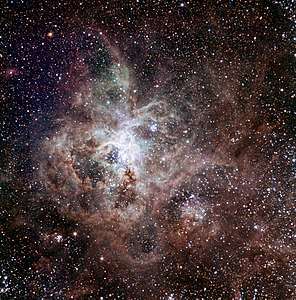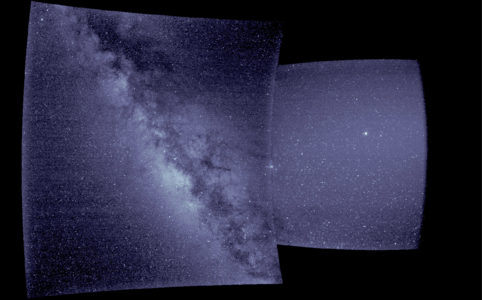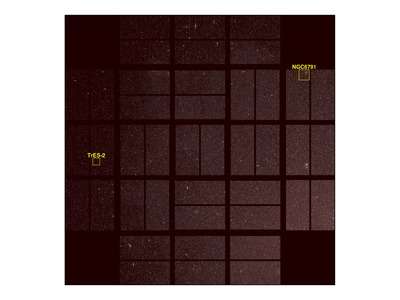First light (astronomy)
In astronomy, first light is the first use of a telescope (or, in general, a new instrument) to take an astronomical image after it has been constructed. This is often not the first viewing using the telescope; optical tests will probably have been performed in daylight to adjust the components.
Characteristics
The first light image is normally of little scientific interest and is of poor quality, since the various telescope elements are yet to be adjusted for optimum efficiency. Despite this, a first light is always a moment of great excitement, both for the people who design and build the telescope and for the astronomical community, who may have anticipated the moment for many years while the telescope was under construction. A well-known and spectacular astronomical object is usually chosen as a subject.
Historical examples
The famous 5.08-metre (200 in) Hale Telescope of Palomar Observatory saw first light on 26 January 1949, targeting NGC 2261[2] under the direction of American astronomer Edwin Powell Hubble. The image was published in many magazines and is available on Caltech Archives.
The Isaac Newton Telescope had two first lights: one in England in 1965 with its original mirror, and another in 1984 at La Palma island.[3] The second first light was done with a video camera that showed the Crab Pulsar flashing.[4]
Elation at first light images by the Hubble Space Telescope in 1990 soon gave way to initial disappointment when a flaw prevented adjustments for proper operation. The expected first light image quality was finally achieved after a servicing mission in 1993.
The Large Binocular Telescope had its first light with a single primary mirror on 12 October 2005, which was a view of NGC 891.[5][6] The second primary mirror was installed in January 2006 and became fully operational in January 2008.[7]
The 10.4-metre (1,040 cm) Gran Telescopio Canarias had a first light image of Tycho 1205081 on 14 July 2007.[8]
The IRIS solar space observatory achieved first light on 17 July 2013.[9] The PI noted:
"The quality of images and spectra we are receiving from IRIS is amazing. This is just what we were hoping for ..."[9]
Gallery
.jpg)
.png)
 First light of the Tarantula Nebula by TRAPPIST
First light of the Tarantula Nebula by TRAPPIST First light of WISPR on the Parker Solar Probe, September 2018
First light of WISPR on the Parker Solar Probe, September 2018
References
- Atkinson, Nancy. "Kepler's "First Light" Images". Universe Today. Retrieved 2012-10-13.
- Kardel, Scott (2009-01-26). "January 26: 60th Anniversary of Hale Telescope "First Light"". 365daysofastronomy.org. Retrieved 2012-02-04.
- http://www.ing.iac.es/PR/chronology.html
- Information, Reed Business (16 February 1984). New Scientist. Reed Business Information. p. 16.
- http://medusa.as.arizona.edu/lbto/first_light.htm Archived 2008-12-02 at the Wayback Machine
- "Large Binocular Telescope Successfully Achieves First Light". SpaceRef.com. 2005-10-26. Retrieved 2012-02-04.
- "Giant telescope opens both eyes". BBC News. London. 2008-03-06. Retrieved 2008-03-06.
- "First Light for the Gran Telescopio Canarias". 14 July 2007. Retrieved 2015-10-03.
- Zell, Holly (9 March 2015). "IRIS Telescope's First Look at Sun Atmosphere".
